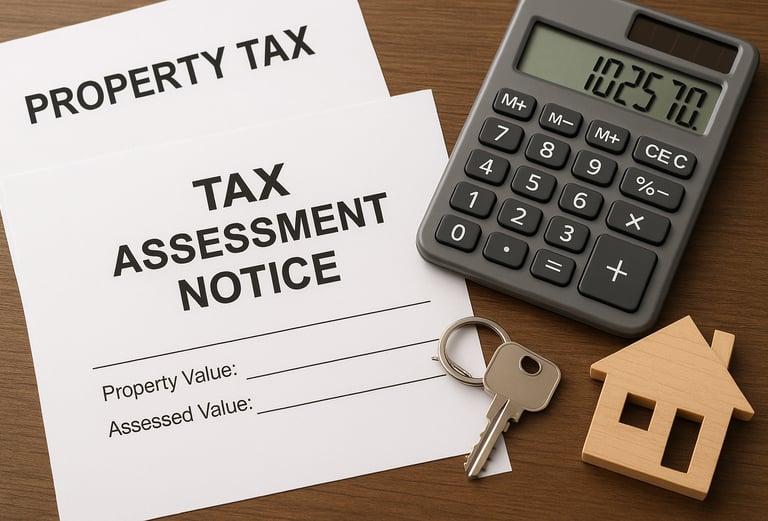Understanding Your 2026 Tax Assessment Notice & Appeal Deadlines


Image: ChatGPT.com
As we approach the end of the year, landlords and property investors should keep an eye on one important document that will impact cash flow in 2026: the property tax assessment notice. These notices are typically mailed out in late winter or early spring depending on your county, but December is the time to prepare, especially if your portfolio includes properties in appreciating neighborhoods across Maryland and the Mid-Atlantic.
Understanding how property tax assessments are calculated—and knowing when and how to appeal—can make a meaningful difference in your operating expenses and long-term investment returns.
What Is a Property Tax Assessment?
A property tax assessment is the value your local government assigns to your property for tax purposes. It may or may not reflect the true market value, especially in a rapidly shifting market.
Your tax bill is calculated using:
Assessed Value × Local Tax Rate = Annual Property Tax
For landlords, this expense directly affects:
Monthly cash flow
Rent pricing strategy
Overall property ROI
Long-term investment viability
Why 2026 Assessments Matter Now
Many regions are experiencing:
Rising property values
Higher municipal operating costs
Updated tax rate proposals
This means your 2026 assessment could increase, even if rent prices stabilize.
Preparing now allows landlords to:
Budget more accurately for next year
Adjust lease renewals if needed
Plan possible appeal strategies
Signs Your 2026 Assessment May Be Too High
Your property may be over-assessed if:
The assessed value is significantly higher than recent comparable sales
The home has deferred maintenance or structural issues not reflected in the valuation
Nearby properties of similar size are assessed at lower values
Even small discrepancies can translate into hundreds or thousands in annual tax expense.
How to Prepare Before Your 2026 Notice Arrives
Take these steps now (December/January):
Collect Comparable Sales (Comps)
Look at recent sales in the same neighborhood and property class.Review Current Assessment Records
Confirm square footage, number of units, year built, and improvements are listed correctly.Document Any Factors That Lower Value
Examples include roof age, HVAC condition, parking limitations, or outdated interiors.Estimate Potential Tax Impact
Consider building a simple model to project best- and worst-case tax changes.
Understanding Appeal Deadlines
Each county sets specific appeal windows, often 30–45 days from the mailing date of your notice—not the date you receive or open it.
Missing the deadline forfeits your right to challenge the bill for that cycle.
Landlord Tip:
Add the expected notice mailing date to your calendar now and set a reminder to review the notice the day it arrives.
How to File a Property Tax Appeal
Appeals generally require:
A written request or online form submission
Recent comparable sales data
Photos or documentation of condition issues
Supporting statements explaining your claim
Some landlords choose to hire a tax appeal specialist, often paid only if they save you money.
Budgeting for Possible Increases
Even if you plan to appeal:
Build a tax increase buffer into your 2026 cash flow projections
Review lease renewal timelines and notice periods
Consider incremental rent adjustments across your portfolio instead of sudden large increases
Proactive planning reduces financial stress and supports long-term stability.
Final Thought: Protect Your ROI by Staying Ahead
Your 2026 tax assessment isn’t just paperwork—it’s a direct input to your investment profitability. Landlords who review assessments early and appeal when necessary consistently outperform those who let taxes increase unchecked.
A few hours of preparation now can save hundreds or even thousands over the next tax cycle.
For more information on properties located in Harford & Baltimore County, MD, click here.


